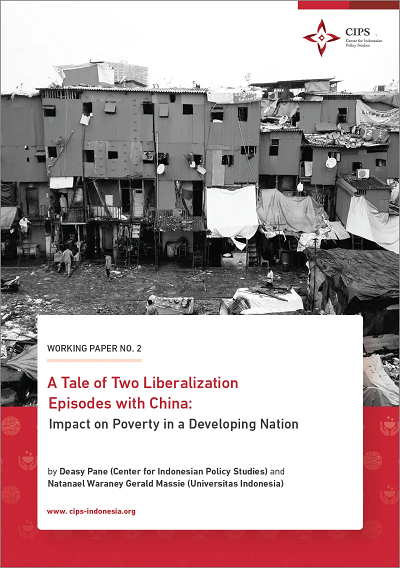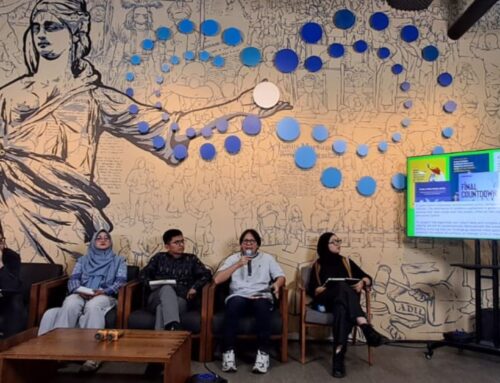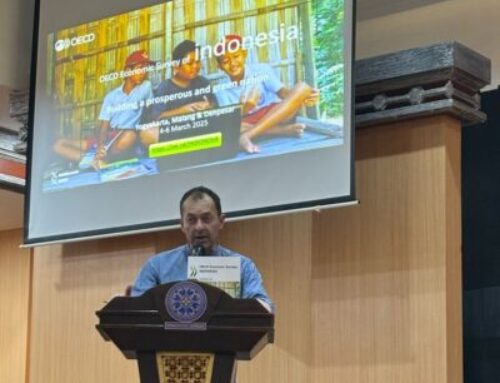FKP hosted by BAPPENAS with speakers Deasy Pane (BAPPENAS and Center for Indonesian Policy Studies/CIPS) and Natanael Waraney Gerald Massie (Universitas Indonesia) on Tuesday, 8 Octboer 2024.
Update: The research has been published by the Center for Indonesian Policy Studies/CIPS. Download from the CIPS website.
This study examines the impact of two trade liberalization episodes with China on poverty in Indonesia, focusing on how changes in trade—both imports and exports—affect three key poverty indicators: poverty rate (P0), poverty gap (P1), and poverty severity (P2).
The methodology used involves a “shift-share” analysis to measure regional trade exposure to China. Data from the World Integrated Trade Solution (WITS), Indonesia’s National Labor Force Survey (SAKERNAS), and National Socio-Economic Survey (SUSENAS) were utilized to analyze trade dynamics, labor market effects, and socio-economic indicators. An instrumental variable (IV) approach was employed to account for external factors that might influence the findings.
Findings reveal that increased imports from China, particularly input goods for production, significantly reduce poverty. Cheaper consumer goods also enhance the purchasing power of poor households, though the effect is smaller. Imports of capital goods, however, show no significant impact. On the export side, while raw materials and intermediate goods contribute to poverty reduction, the benefits are limited as they do not sufficiently reach or employ the poorest individuals.
The study highlights that the impact of trade is more pronounced in urbanized regions with better education and infrastructure. In contrast, less-educated areas experience greater reductions in poverty gaps and severity, suggesting that trade liberalization can benefit these regions indirectly by improving economic conditions. The findings emphasize the need for inclusive trade policies that support job creation for low-income groups and investments in education and infrastructure to optimize the benefits of trade liberalization.






